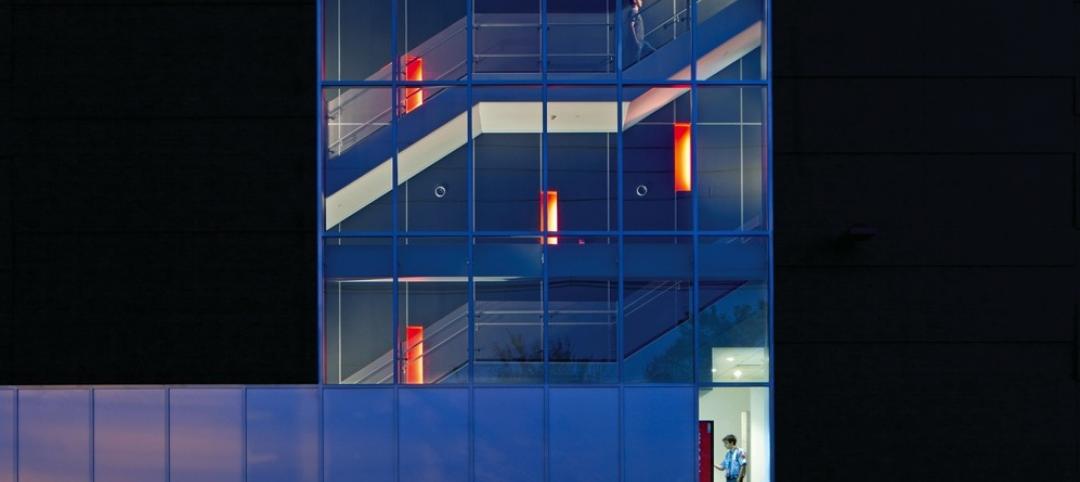A new study by Boulder, Colo.-based Navigant Research projects that public- and private-sector efforts to lower the carbon footprint of new and renovated commercial and residential structures will boost the annual revenue generated by commercial and residential zero energy buildings (ZEBs) over the next 20 years by 122.5%, to $1.4 trillion.
This study cites the lack of unified standards bodies as a barrier to the growth of ZEBs. It forecasts revenues for six product and service categories—lighting, walls and roofing, HVAC, glazing, renewable energy, and soft costs—by geographic and national regions, with specific emphasis in the U.S. on California and Massachusetts.
“The global zero energy building market has many pockets of potential growth, but challenges remain in defining what exactly a ZEB is, as well as raising awareness of the increasing accessibility of these solutions,” said Noah Goldstein, research director with Navigant Research. “The strongest driver for this market is regulation, as policies like the European Union’s Energy Performance of Buildings Directive and California’s evolving Title 24 building code bring ZEB markets into being for new commercial, new residential, and retrofitted commercial spaces.”
The technology and equipment associated with the building envelope are developing rapidly, reducing the soft costs associated with ZEBs, according to the report. New developments in building envelope materials, along with innovative manufacturing techniques for windows and glazing, should help lower the energy use intensity of buildings. This focus on improved envelopes is expected to aid the greater building ecosystem, reducing energy costs for non-ZEBs, as well.
Related Stories
| Jul 27, 2014
Maturing ‘plug and play’ sector could take market share from AEC Giants [2014 Giants 300 Report]
The growth of modular and containerized data center solutions may eventually hinder the growth of traditional data center construction services.
| Jul 27, 2014
Top Data Center Construction Firms [2014 Giants 300 Report]
Holder, Turner, and DPR head Building Design+Construction's 2014 ranking of the largest data center contractors and construction management firms in the U.S.
| Jul 27, 2014
Top Data Center Engineering Firms [2014 Giants 300 Report]
Fluor, Jacobs, and Syska Hennessy top Building Design+Construction's 2014 ranking of the largest data center engineering and engineering/architecture firms in the U.S.
| Jul 27, 2014
Top Data Center Architecture Firms [2014 Giants 300 Report]
Gensler, Corgan, and HDR head Building Design+Construction's 2014 ranking of the largest data center architecture and architecture/engineering firms in the U.S.
| Jul 25, 2014
Grocery stores choosing Green Globes for building sustainability certification
The Green Building Initiative (GBI) has announced a wave of Green Globes certifications for new grocery stores, including New Seasons Markets, Whole Foods, Price Chopper, Aldi’s, Harris Teeter, Wegmans, and Publix.
| Jul 24, 2014
SLATERPAULL Architects to merge with Hord Coplan Macht
The merger will create a full-service practice with offices in Baltimore, MD, Denver, CO and Alexandria, VA that offers integrated architecture, landscape architecture, interior design, planning and historic preservation services.
| Jul 24, 2014
MIT researchers explore how to make wood composite-like blocks of bamboo
The concept behind the research is to slice the stalk of bamboo grass into smaller pieces to bond together and form sturdy blocks, much like conventional wood composites.
| Jul 24, 2014
Glazing options in correctional and detention facilities
Like it or not, the number of incarcerated people in the U.S. continues to rise. With that, increased security in all aspects of these facilities continues to be a priority. This is where security glazing products that allow line of sight for supervisors to observe and still maintain secure separation can play a key role. SPONSORED CONTENT
| Jul 23, 2014
Holistic care model, regulatory changes make outpatient facilities a high priority [2014 Giants 300 Report]
With the Affordable Care Act still in its infancy, Building Teams are seeing reverberations in the investment decisions of healthcare providers, including new ideas about the types of buildings they are asked to create.
| Jul 23, 2014
Meet Acquario Ceará: The giant crustacean-shaped aquarium that's causing concerns
A new aquarium on Brazil's northeastern coast is designed, engineered, constructed and financed by U.S. firms and institutions.













